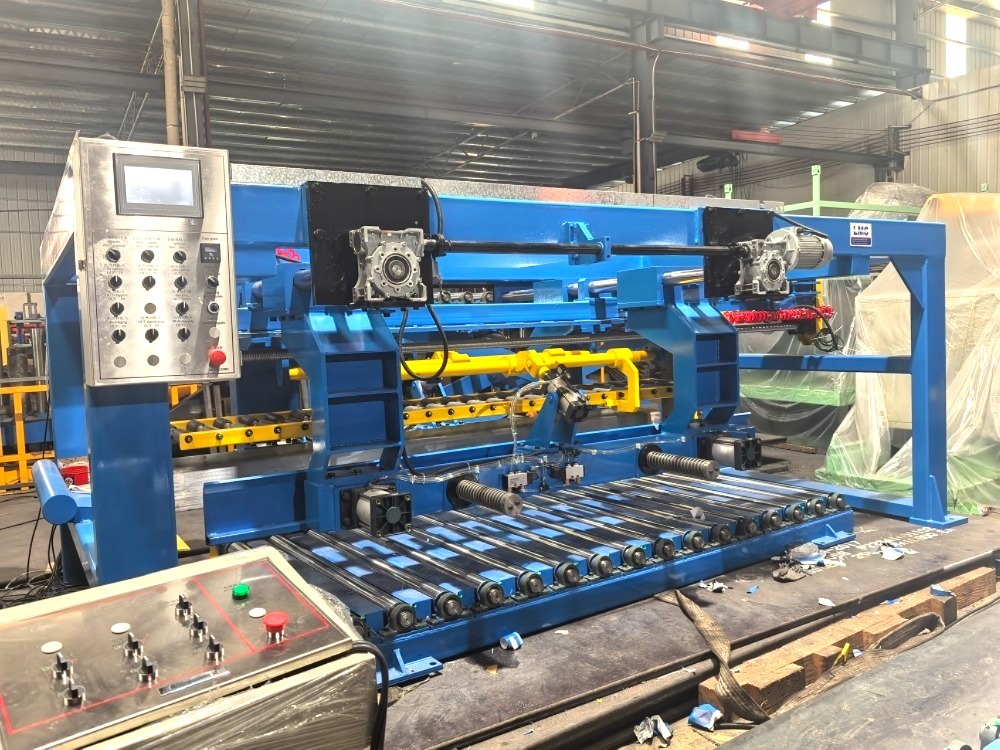Understanding Decoiling and Cutting to Length Lines in Metal Processing
Jul 31,2025

Decoiling and cutting to length lines play a crucial role in the metal processing sector, particularly in the manufacturing of sheet metal and various other metal products. These lines are designed to handle large coils of metal, efficiently decoiling them into manageable lengths according to specific production requirements. Understanding the functionality and advantages of these systems can greatly enhance operational efficiency and product quality.
The decoiling process begins with the metal coil being unwound, or “decoiled,” from a large roll. This is often accomplished using a decoiler, which is specifically designed to handle the weight and dimensions of the coil safely. The decoiler ensures that the metal is fed smoothly into the cutting system without causing any damage or deformation. This step is critical, as any flaws introduced during the decoiling process can lead to significant issues down the line.
Once the metal has been decoiled, it enters the cutting phase, where it is precisely cut to the desired length. This is typically achieved through high-speed cutting mechanisms that can handle various thicknesses and types of metal. Some advanced systems utilize laser or shear cutting methods, ensuring clean edges and accurate dimensions. The ability to cut metal to precise lengths is vital for downstream processes, as it ensures that components fit together seamlessly and meet stringent quality standards.
In addition to efficiency, decoiling and cutting to length lines offer several advantages. Firstly, they significantly reduce manual labor, minimizing the risk of injuries associated with traditional cutting methods. This automation not only enhances workplace safety but also increases production speed, allowing for greater output in a shorter time frame.
Moreover, having an integrated decoiling and cutting system reduces material waste. By ensuring that metal is cut to the exact length required, manufacturers can maximize the utilization of their raw materials, contributing to a more sustainable production process. This is particularly important in today's competitive market, where efficiency and resource management are crucial for maintaining profitability.
Furthermore, modern decoiling and cutting to length lines come equipped with advanced controls and monitoring systems. These technologies provide real-time data on operations, enabling manufacturers to identify potential issues before they escalate. Such proactive management leads to reduced downtime and maintenance costs.
In conclusion, decoiling and cutting to length lines are indispensable in the metal processing industry. They streamline operations, enhance product quality, and contribute to overall efficiency. By investing in these systems, manufacturers can stay competitive and meet the ever-evolving demands of the market. Understanding their significance is the first step towards optimizing your manufacturing processes and achieving long-term success in the industry.
The decoiling process begins with the metal coil being unwound, or “decoiled,” from a large roll. This is often accomplished using a decoiler, which is specifically designed to handle the weight and dimensions of the coil safely. The decoiler ensures that the metal is fed smoothly into the cutting system without causing any damage or deformation. This step is critical, as any flaws introduced during the decoiling process can lead to significant issues down the line.
Once the metal has been decoiled, it enters the cutting phase, where it is precisely cut to the desired length. This is typically achieved through high-speed cutting mechanisms that can handle various thicknesses and types of metal. Some advanced systems utilize laser or shear cutting methods, ensuring clean edges and accurate dimensions. The ability to cut metal to precise lengths is vital for downstream processes, as it ensures that components fit together seamlessly and meet stringent quality standards.
In addition to efficiency, decoiling and cutting to length lines offer several advantages. Firstly, they significantly reduce manual labor, minimizing the risk of injuries associated with traditional cutting methods. This automation not only enhances workplace safety but also increases production speed, allowing for greater output in a shorter time frame.
Moreover, having an integrated decoiling and cutting system reduces material waste. By ensuring that metal is cut to the exact length required, manufacturers can maximize the utilization of their raw materials, contributing to a more sustainable production process. This is particularly important in today's competitive market, where efficiency and resource management are crucial for maintaining profitability.
Furthermore, modern decoiling and cutting to length lines come equipped with advanced controls and monitoring systems. These technologies provide real-time data on operations, enabling manufacturers to identify potential issues before they escalate. Such proactive management leads to reduced downtime and maintenance costs.
In conclusion, decoiling and cutting to length lines are indispensable in the metal processing industry. They streamline operations, enhance product quality, and contribute to overall efficiency. By investing in these systems, manufacturers can stay competitive and meet the ever-evolving demands of the market. Understanding their significance is the first step towards optimizing your manufacturing processes and achieving long-term success in the industry.
PREVIOUS:
Articoli recenti






